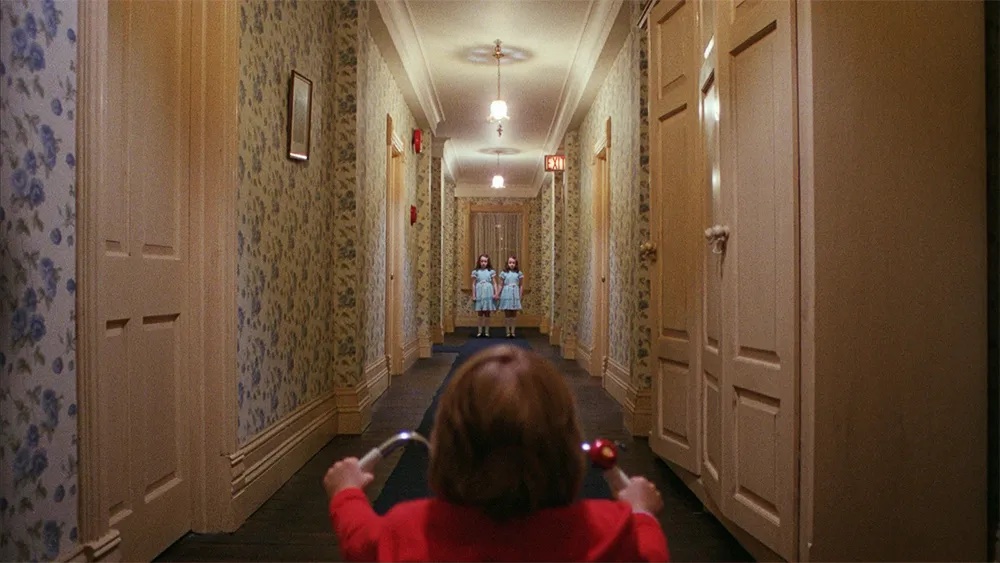
John Alcott, BSC, not only created an iconic horror film but also helped define the genre itself with Stanley Kubrick‘s adaptation of The Shining. Kubrick, who co-wrote the Stephen King adaptation with Diane Johnson, first collaborated with Alcott on 2001: A Space Odyssey after the original cinematographer, Geoffrey Unsworth, BSC, had to leave production early. From there, Alcott and Kubrick worked together on A Clockwork Orange and Barry Lyndon. For the latter film, the cinematographer received an Academy Award.
In 1980, along with steadicam creator and operator Garrett Brown, Alcott made history with The Shining. Brown despised handheld camerawork, which led to the creation of the steadicam. When Kubrick first saw the operator’s steadicam tests, he recognized the future of filmmaking and hired Brown almost immediately.
For The Shining, Brown developed the “low mode” to enable Kubrick and Alcott to shoot young Danny Torrance in the film; sometimes the camera was only an inch above the floor. There were many firsts for Alcott in The Shining. Initially, he had concerns about the intensive use of the steadicam.
The cinematographer shared his thoughts in a 1980 issue of The American Society of Cinematography, stating, “He said he wanted it to have a different approach from previous films. He emphasized using the steadicam extensively and freely, without relying on studio lights. This was a challenge. I had envisioned how it could work, but I wasn’t sure if it would be practical. You can’t predict how things will look until you’re on set with the actors. By then, the sets are built, and it’s too late to make significant changes.”
Alcott wasn’t the only collaborator to comment on Kubrick’s notorious perfectionism. He felt that Kubrick not only demanded perfection but also provided the necessary tools for the crew to achieve it. Alcott said, “We’ve been working together since about 1965, and every time we work together, there’s a different outlook and a quest for improvement. Stanley constantly challenges us to try something new and make it better than before. Having the time and resources, as we did on The Shining, to ensure the sets matched your lighting design and the art director’s vision was a privilege. You don’t have that luxury with someone lacking Stanley’s experience and visual perception.”
Tragically, Alcott passed away in 1986 at the age of 55, and his last collaboration with Kubrick was on The Shining. Throughout the four films they worked on together, Alcott always felt well-prepared for whatever came next. He noted, “Stanley is willing to go the extra mile to help you explore new lighting techniques, which makes your job easier. I don’t think our working relationship has changed significantly. He may be more demanding now, but that better prepares you for your next project. To use a cricket analogy, it’s like practicing with five wickets and then playing with only three. Defending five makes defending three much easier.”





